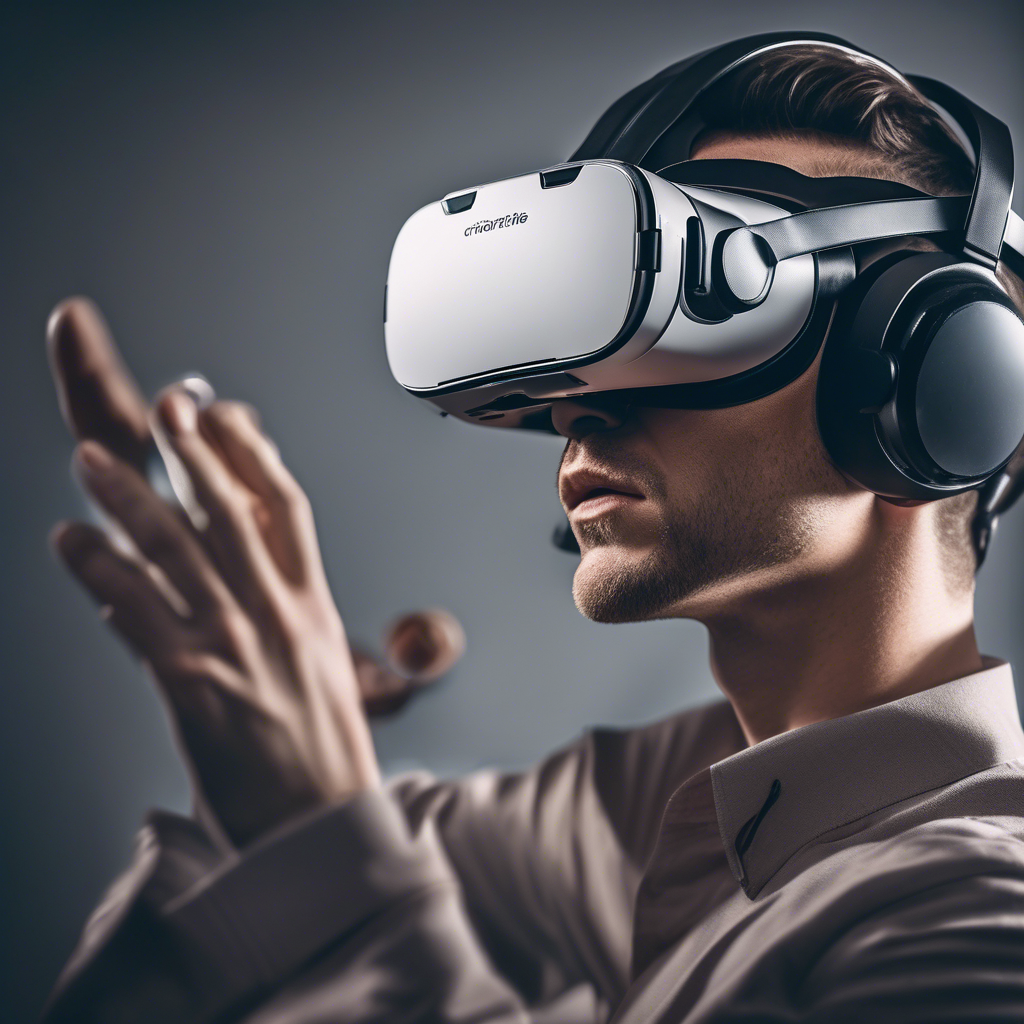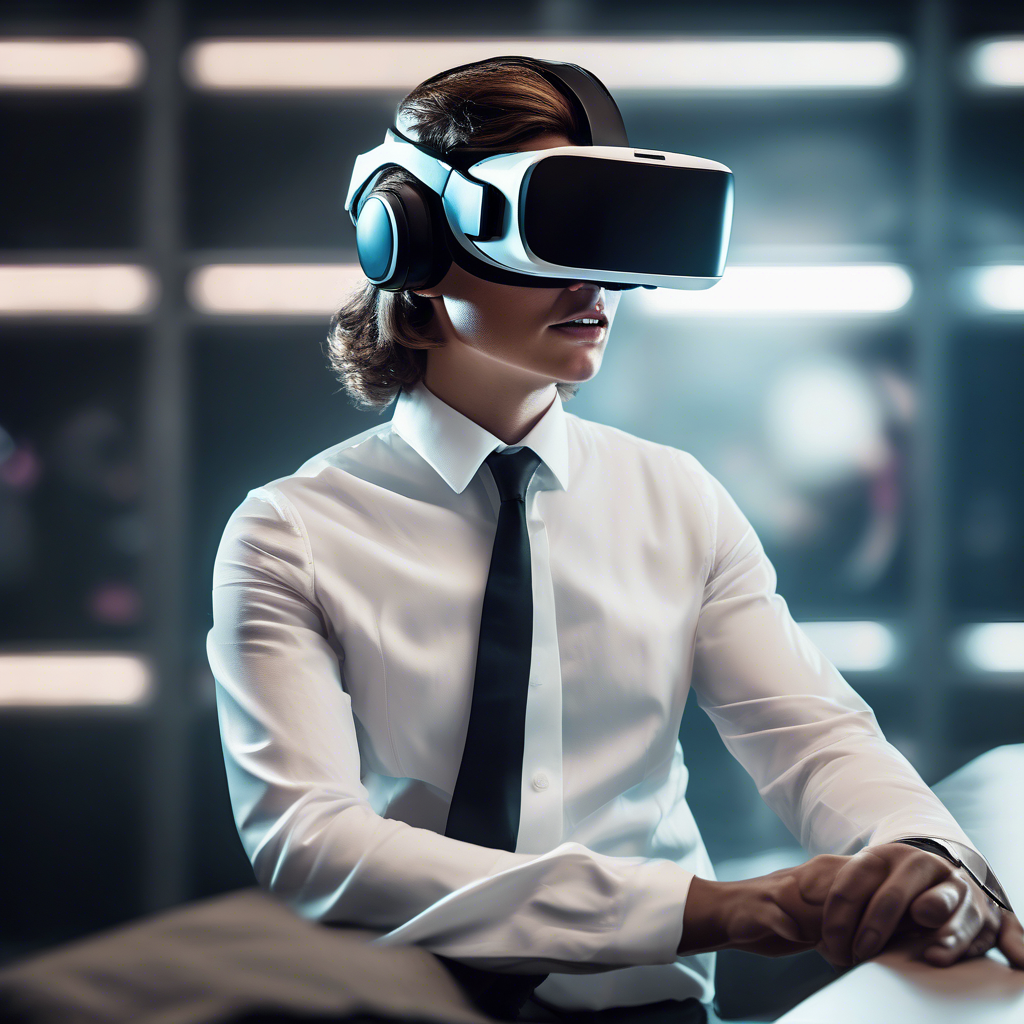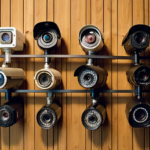VR in 2025: How Virtual Reality is Changing Everything
Picture this: It’s 2025, and you’re attending a concert, not physically, but through a virtual reality headset that makes you feel like you’re there, right in the middle of the crowd. The band is playing your favorite song, and you can even see the individual beads of sweat on the drummer’s brow—without leaving your living room. It sounds like something out of a sci-fi movie, right? But this is the future of virtual reality, and it’s happening sooner than you think.

In recent years, virtual reality (VR) has leapt beyond the realm of gaming and entertainment. From revolutionizing business protocols to changing how we interact socially, VR in 2025 promises to transform our lives in ways we could never have predicted. The proliferation of VR technology is not just about immersive experiences; it’s about reshaping reality as we know it. But how exactly is VR poised to change everything? Let’s take a deeper dive into the trends in virtual reality for the future.
The Evolution of VR Technology
From Gaming to Everyday Life
The origins of VR can be traced back to gaming. Remember those cumbersome headsets from a decade ago? They’ve evolved into sleek, lightweight devices that can transport you to other worlds. VR isn’t just for gamers anymore; it’s become a tool used in education, health care, and even corporate training. Think of an aspiring surgeon practicing life-saving techniques in a virtual operating room, honing skills without risk. VR technology evolution has made these scenarios not only possible but commonplace.
This shift from entertainment to education and beyond is a testament to how far VR has come. In 2025, the line between virtual and reality will blur even more. Virtual reality advancements have allowed for interactive and personalized experiences that cater to individual learning styles, making education more accessible and engaging. And let’s not forget about social interactions. With VR, hanging out with friends across the globe feels as intimate as being in the same room. It’s a game-changer, honestly.
Business and Industry Transformation
Businesses have always been on the lookout for the next big thing, and VR is that thing. The future of AI in business automation ties in closely with VR, creating seamless and efficient workflows. Imagine attending a board meeting in a virtual conference room or showcasing a new product to clients worldwide without leaving your office. These aren’t just dreams; they’re VR innovation 2025 realities.
Let’s take a hypothetical scenario: You’re a real estate agent showing properties to clients. Instead of scheduling multiple visits, your clients explore homes through a virtual tour, experiencing the space in a realistic way without stepping outside. This not only saves time but also reduces costs. AI technologies changing the business landscape are integrating with VR to create smarter, more dynamic business environments. The possibilities are as endless as they are exciting.
The Rise of Web 4.0
Web 4.0 predictions for 2025 include a more immersive internet experience, with VR playing a pivotal role. Imagine the internet not just as a collection of pages but as a space you can walk through. Virtual reality trends are steering us towards a future where websites are virtual environments, providing experiences rather than just information. You’ll no longer just watch a video; you’ll participate in it.
The integration of VR with AI will create personalized web experiences like never before. Picture visiting an online store, where a virtual assistant—powered by AI—guides you through your shopping, offering suggestions based on your preferences and previous purchases. It’s like having a personal shopping assistant, but available 24/7. This blend of VR and AI is crafting a more intuitive and engaging digital world.
The Impact on Daily Life
Healthcare Innovations
Virtual reality advancements in healthcare are nothing short of revolutionary. From training medical students to providing therapy for patients with phobias, VR is enhancing the way we approach health and wellness. Imagine a therapist guiding a patient through a controlled virtual environment to confront and overcome their fears. It’s a therapeutic technique that’s gaining traction for its effectiveness.
Moreover, VR is being used for pain management, offering patients a distraction from discomfort during procedures. This method has shown promising results, particularly for pediatric patients. By focusing on a VR environment, patients report feeling less pain and anxiety. The impact of virtual reality in health care is profound, providing new methods for treatment that were unimaginable just a few years ago.
Education and Training
Education is another area where VR is making waves. Traditional teaching methods are being augmented with immersive experiences that enhance learning. Consider a history class where students don VR headsets to visit ancient civilizations, witnessing historical events firsthand. This isn’t just learning; it’s experiencing history in a way books and videos can’t replicate.
In 2025, VR will be integrated into curriculums worldwide, providing interactive experiences that cater to various learning styles. The future of virtual reality in education is bright, offering students more engagement and understanding of complex subjects. Plus, professional training programs are adopting VR for skill development, offering safe and effective ways to practice techniques in fields like fire safety and emergency medical response.
Social Interaction and Entertainment
VR is also reshaping how we socialize and entertain ourselves. Virtual reality trends suggest a future where social platforms are immersive environments, allowing for deeper connections. Imagine attending a virtual party where you can dance alongside avatars of your friends or participate in virtual reality concerts that feel as real as the actual events.
Entertainment is no longer limited by geographical boundaries. With VR, you can attend events globally, share experiences, and even create new ones in a virtual space. This democratization of experience means that anyone, anywhere, can be part of something bigger, fostering a sense of global community. Honestly, it’s a thrilling time to be alive.
Practical Applications and Innovations
Innovations in Retail and Shopping
Shopping is about to get a lot more interesting with VR. Retailers are adopting virtual reality to offer customers immersive shopping experiences. Imagine trying on clothes in a virtual fitting room or decorating your home with furniture before making a purchase. In 2025, VR will provide personalized shopping experiences tailored to individual tastes and preferences.
This trend isn’t just about convenience; it’s about creating a seamless and enjoyable shopping journey. Retailers using VR can offer customers a richer experience, helping them make informed decisions. This isn’t just a novelty, but a practical application of VR technology that’s set to change how we shop. The future of VR in retail is here, and it’s set to redefine consumer experiences.
Revolutionizing Remote Work
The global shift towards remote work has accelerated the adoption of VR in business. Virtual offices are becoming the norm, where employees can collaborate and communicate as if they were in the same room. Imagine attending a brainstorming session in a virtual space, complete with interactive whiteboards and real-time collaboration tools. This is the new norm for many forward-thinking companies.
VR facilitates team building, enhances communication, and improves productivity. The virtual reality impact on remote work is tremendous, allowing for flexible, efficient, and engaging work environments. Companies are investing in VR technologies to create better experiences for remote workers, bridging the gap between physical distance and team cohesion.
Travel and Tourism Reimagined
Travel and tourism are undergoing a transformation with VR. As travel restrictions have become more common, virtual tours offer people the chance to explore new destinations from the comfort of their own homes. Imagine walking through the streets of Paris or exploring the Great Barrier Reef, all through a VR headset.
This isn’t just a stopgap for those who can’t travel physically; it’s an opportunity to experience the world in new and exciting ways. VR in 2025 will offer more immersive and interactive travel experiences, allowing people to explore and learn about different cultures and places without the need for expensive flights or long journeys. It’s a whole new world of exploration, quite literally.
Frequently Asked Questions
How is VR changing the business landscape?
VR is transforming businesses by enhancing remote work capabilities, improving training programs, and creating immersive marketing experiences. Companies are using VR for virtual meetings, product demonstrations, and even recruitment processes, making them more efficient and engaging.
What are the future trends in virtual reality?
Future trends include more interactive and personalized VR experiences, integration with AI for smarter applications, and the expansion of VR into new industries like real estate, healthcare, and education. The focus will be on making VR more accessible and affordable for everyday use.
Will VR replace traditional smartphones?
While VR offers unique experiences, it’s unlikely to replace traditional smartphones completely. Instead, VR will complement mobile technology, offering new ways to interact with content. Foldable phones, with their innovative designs, might blend these technologies for more versatile uses.
How is VR being used in education?
VR is revolutionizing education by offering immersive learning experiences. Students can explore historical events, conduct virtual science experiments, and practice real-world skills in a safe environment. This hands-on approach enhances understanding and retention of information.
What are the challenges facing VR technology?
Challenges include high costs, technical limitations like resolution and latency, and potential health issues such as motion sickness. Developers are working to overcome these hurdles, focusing on improving hardware and creating content that minimizes these drawbacks.
Conclusion: Embracing the Virtual Future
As we look towards 2025, it’s clear that virtual reality is more than just a passing trend; it’s a fundamental shift in how we interact with technology and the world around us. From reshaping industries to enhancing daily life, VR is set to touch every aspect of our lives. It’s not just about seeing but experiencing in a way that’s both profound and exhilarating.
The call to action is simple: embrace these changes. Explore VR technologies and consider how they can enhance your life or business. Whether it’s through educational opportunities, business applications, or personal entertainment, VR offers a wealth of possibilities that are only limited by our imagination. The future is virtual, and it’s here to stay.
So, what are you waiting for? Dive into the world of VR and discover a new reality that’s waiting just beyond the horizon. After all, the future isn’t something we wait for; it’s something we create.







